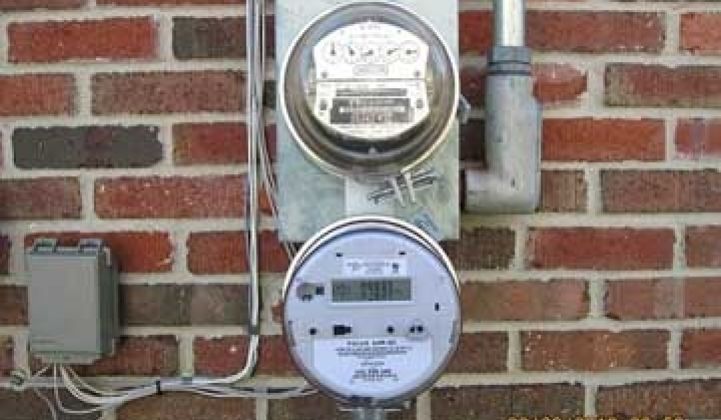Among the murmurings surrounding the smart meter backlash in California and Texas, some have suggested that maybe those old meters weren’t so accurate in the first place.
It’s true, sort of. The mechanical meters that still adorn the sides of most homes in the U.S. are inaccurate slightly more often than smart meters, but it is not enough of a discrepancy to account for the wildly higher bills that have incensed customers.
Recent side-by-side testing by Oncor, the energy delivery company in Texas that has recently been battered with reports from irate customers, found mechanical and smart meter readings were somewhat close.
Oncor says it has not found a single smart meter to date that is inaccurate (except for about 1 percent that were installed incorrectly). However, about 5 percent of mechanical meters tested are usually found to be off.
Just how off is off? Oncor spokesman Chris Schein said nearly all of those meters were running slow, but generally they were only lagging behind by a few percent (mechanical meters are considered accurate within 2 percent). Thus, 5 percent of meters were lagging by a few percentage points. Some utilities have reported instances of outright fraud, i.e., customers figuring out the schedule of meter readers in their areas and disabling the meters when they aren't around. Fraud, though, is likely somewhat rare and isolated.
Itron, which formerly produced mechanical meters and now makes smart meters, said that older instruments generally have a lifespan of about 30 years before they start to slow down.
Even if nearly 150,000 of 3 million Oncor customers may be getting a break on their bills due to slow-paced meters, the aging infrastructure does not explain the extreme hike in bills with the switch to advanced metering.
“You’re not going to have that kind of spike,” Schein said. Pacific Gas & Electric spokesman Paul Moreno was also quick to point out that only a small percentage of analog meters were running slow when tested and are replaced afterwards.
Unseasonable temperatures, poor choices in home heating and cooling along with a lack of customer education are just some of the reasons utilities say people have seen a price increase with smart meters. Higher rates and temperatures could have occurred before the meters were installed, but the fact that the smart meters came in at the same time goes a long way toward explaining why many customers are clamoring for their old meters. Even though Oncor has done a small side-by-side testing of old versus new, it is obviously not enough to appease people who have seen their bills double or triple recently. Any reasoning for high bills by PG&E has also not instilled confidence in consumers.
Old-fashioned meters also come with built-in familiarity. They may not be perfect, but at least consumers have never had many reasons to question them.
Mentioning the slight inaccuracy of mechanical meters is only a disservice to customers who are obviously angry (and ill-informed in some cases) about what smart meters can do to help them take control of their energy usage. As of right now, it looks like there’s still an uphill battle to convince people that they should want to take control of their energy use in the first place, hence the recent announcement of a consumer group for smart grid.
If smart meter rollouts do not come with the demand pricing and software that allows people to better understand and tweak their home energy use from day one, accompanied by the education to allow people to embrace the technology, then it is easy to see why an aging mechanical meter looks as good as a smart meter.



